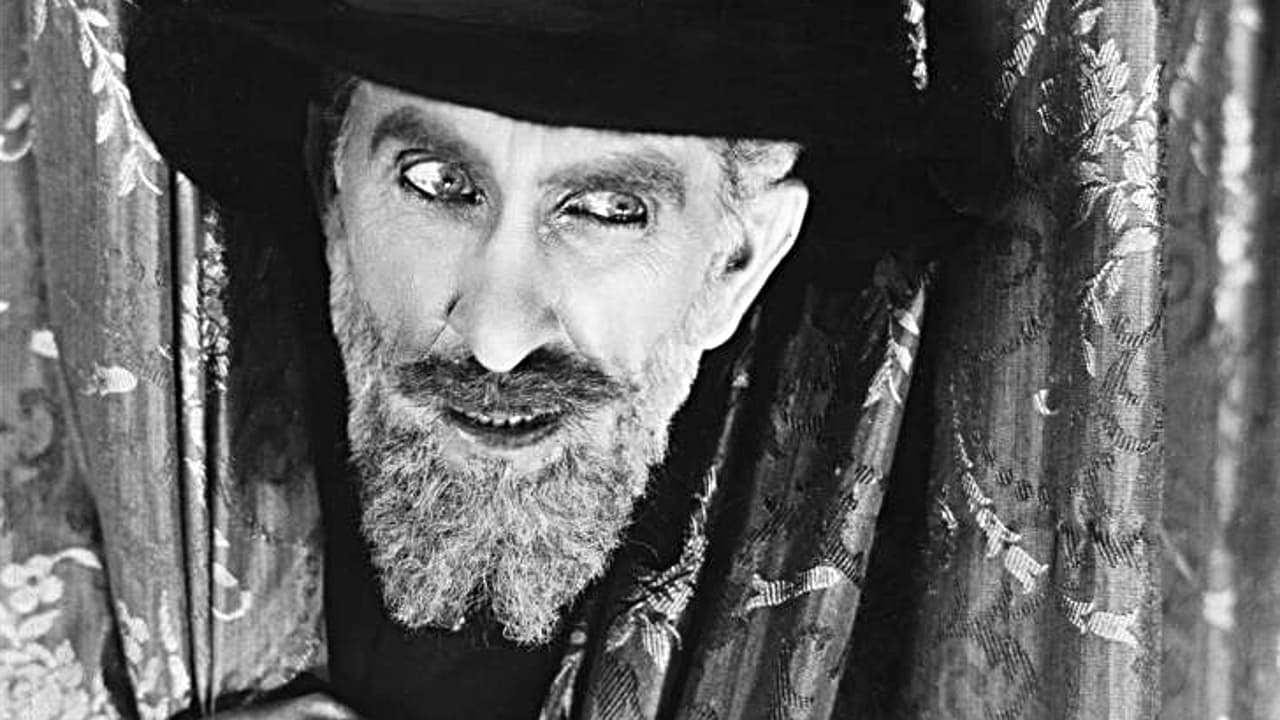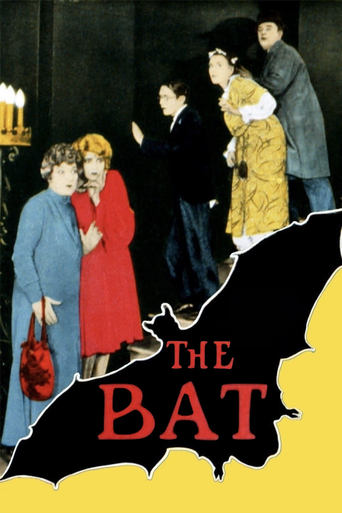Huievest
Instead, you get a movie that's enjoyable enough, but leaves you feeling like it could have been much, much more.
Gurlyndrobb
While it doesn't offer any answers, it both thrills and makes you think.
Yash Wade
Close shines in drama with strong language, adult themes.
Stephanie
There is, somehow, an interesting story here, as well as some good acting. There are also some good scenes
MARIO GAUCI
Like WEST OF ZANZIBAR (1928), this was a much-desired Silent ‘horror’ classic even if I had already watched the plot in action, so to speak, via a couple of Sound remakes – the 1930 version (from the same director!) and a later one made in 1959. Actually, this first adaptation of a popular ‘old dark house’-type play of the 1920s – when these proliferated in both mediums – was long considered a lost film; I watched it, in fact, via a serviceable 16mm print which suffered from constant (though not overly distracting) combing whenever characters moved! To get back to the later versions, I’ve enjoyed THE BAT WHISPERS (1930) twice in its “Grandeur” i.e. early Widescreen format – I own the now out-of-print Image/Milestone DVD (which also includes the alternate “Standard” edition filmed simultaneously by a different cinematographer, but I’ve yet to check it out). Now, the film seems to elicit mixed reactions from most viewers (including myself): that is to say, being impressed with its distinctive visuals (spare but stylish production design, clever models – both qualities also evident in the original – and fluid, ground-breaking camera-work) yet being put off by the unfortunately archaic comedy relief supplied by an ugly and diminutive middle-aged maid (still, this ‘fraidy cat’ figure was something of a pre-requisite for the subgenre concerned). The 1959 film was a major disappointment on first viewing (dubbed in Italian) – despite the presence of an icon like Vincent Price; I do recall liking it a bit more in English (re-watched by way of a budget DVD I rented), but the result still lagged far behind either Roland West version! Now that I’ve caught up with the original as well, I can safely say that it more than holds its own alongside THE BAT WHISPERS; I’m not always partial to directors remaking their own work but, in spite of my even greater reservations about the maid’s histrionics in the later version (remember that we can also hear her now and, therefore, is all the more liable to get on one’s nerves!), as I said, the gliding cinematography – presumably intended to emulate the movements of a real bat – was a lot more pronounced in the remake…where we also had archetypal lines (missing from the 1926 film) such as “Reach for the ceiling!” that were even parodied by Tex Avery in the cartoon short WHO KILLED WHO? (1943). The intricacies of the plot – revolving around a remote country estate which is gradually inundated by people (relatives of the current elderly female tenant, the doctor charged with her care, employees of the house’s recently murdered banker owner accused of embezzling funds, police officers on the trail of arch-criminal “The Bat” whose intended crime at the bank was anticipated but who has followed the culprit to the premises, etc.) – are pretty much identical, and the result equally entertaining. Incidentally, while the villain here sports a grotesque bat mask, in the 1930 film he exchanges this for a black cape (thus both helped give cartoon artist Bob Kane the idea for Batman, extending also to that character’s trademark ‘Bat Signal’!).It’s been some time since my last viewing of THE BAT WHISPERS, so I’m understandably fuzzy about some aspects: I know the villain adopts a particular disguise in order to roam freely about the house – but he goes by different names in each version (the one from the remake is also present in the original but it turns out not to be him after all and is, in fact, a bit of a buffoon!); both, then, feature a suave male lead – Tullio Carminati (in his first American film and looking an awful lot like Rudolf Kleine-Rogge!) here and Chester Morris in the 1930 version (I’ll be seeing him presently in another title by director West, the noir precursor ALIBI [1929]). For the record and, as far as I can recall, the only other films in this vein from the Silent era I’ve watched were the interesting but lesser THE MONSTER (1925; yet another Roland West picture – with Lon Chaney, no less, though their individual styles didn’t really jell) and two outstanding efforts by similarly gifted film-makers, namely Paul Leni’s THE CAT AND THE CANARY (1927; itself adapted three more times for the screen!) and Benjamin Christensen’s SEVEN FOOTPRINTS TO Satan (1929; which is an even rarer title than THE BAT – since the copy I own only carries Italian intertitles which, luckily, I’m able to understand).Trivia: leading lady Jewel Carmen was married to her director at the time; apparently, the couple remained on friendly terms after their separation and she would, in fact, become involved in a restaurant business with him and future companion Thelma Todd (a venture which, however, ended badly with the latter’s notorious and still unsolved mysterious demise in 1935!).
kidboots
The German expressionist cinema had a huge influence on Hollywood in the twenties as seen in "The Bat". The stylized sets of William Cameron Menzies, the elongated doors, furniture making the people look small. All of it makes "The Bat" a beautiful looking production.Gideon Bell has been notified by "The Bat" that he will be robbed of his famed Favre Emeralds and if he notifies the police he will be killed. The film opens with the police standing by ready to act. Of course "The Bat" has killed Bell, stolen the emeralds and left a note to say he is going to the country before the police realize anything is going on.In the country Miss Cornelia Van Gorder (Emily Fitzroy), her niece (Jewel Carmen) and a zany housekeeper (Louise Fazenda) are leasing an estate but are being forced out because of a disputed will.It turns into an "Old Dark House" style thriller with "the Bat" holding people captive and terrorizing them. I found it exciting and "the Bat" was a real surprise. People who have seen the 1960 Vincent Price film will know what's going on but they are very different films and I think this one is better.Jack Pickford is pretty ordinary as Brookes Bailey, a bank clerk, who is being unjustly accused of embezzling bank funds.Jewel Carmen played the niece, Dale. This was her last film. She was married to Roland West, the director and in the next decade was to be involved in the Thelma Todd murder.
pocca
"The Bat" is often described as one of the first haunted house movies, but it also brings to mind those action films that specialize in droll, stylish villains for whom the art of the crime is just as important as whatever material gains can be had from it. The villain of "The Bat," who chooses to disguise his identity with an elaborate bat costume and takes the time to leave taunting notes to the police and his victims, is akin to those witty nemeses of Superman and James Bond—the sort of highly imaginative evil genius who was spoofed in the Austin Powers series. The best sequence occurs at the beginning of the film when the Bat steals some priceless emeralds after telling the police exactly when and where he will strike —swiping them almost literally from under the owner's nose. The rest of the movie features an ensemble cast (an ingénue, a detective, a doctor, a gardener…) gathered at a mansion where 20 000 stolen dollars are hidden and the Bat is due to show up next, all trying to find the money and figure out which one of them is the original thief. The storyline drags now and then, but the antics of the high strung maid and the dry quips of the elderly eccentric millionaires who's forever knitting keep the viewer's attention whenever the pace flags.Recommended, but avoid the Alpha version which features a monotonous, mournful musical score (that I'm certain was also used with their version of "Way Down East") that is completely at odds with the film's humorous tone.
dbborroughs
This film, like the play that it comes from asked the audience to keep the secret of the Bat secret so I will do the same and so I'll only speak in generalities.One of the grand old dark house films this is the story of the super criminal known as The Bat and his attempt to steal a great fortune.
This film isn't the best ever made. The passage of time has diminished its impact a bit. Part of the problem is that at times the film has to wrestle with its stage origins, things seem to stagnate and you become bored. However at other times this film soars with a visual style that has rarely been matched. The mask of the villain for example hasn't been equaled. Thankfully its always watchable.Certainly worth a look.

